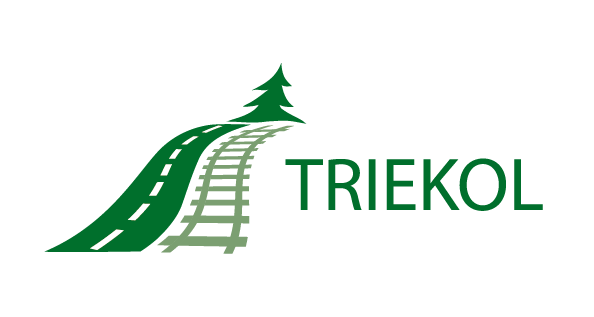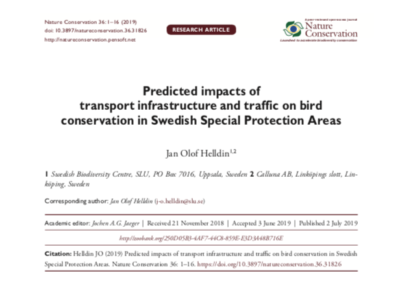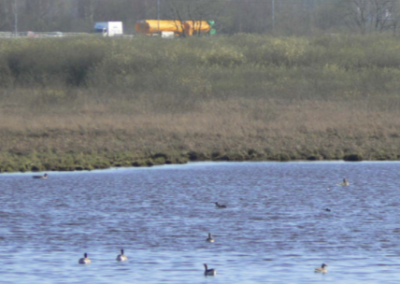Infrastructure impacts on protected areas
TRIEKOL I-IIEcological impacts of roads and railways extend into the surrounding landscape, leading to habitat degradation and reduced wildlife densities within an area larger than the actual road or railway corridor. As a consequence, natural values within large areas may be jeopardized due to transport infrastructure.
The subproject Infrastructure impacts on protected areas studied the effects of infrastructure on protected areas.
Previous studies have indicated an average 20% reduction in bird density within one kilometer from transport infrastructure. In regions with dense infrastructure networks, large natural areas may be situated within this effect zone and therefore impoverished in species sensitive to traffic and transport infrastructure.
TRIEKOL has addressed the impacts of transport infrastructure on protected areas. In particular, it has been investigated to what extent this density reduction near transport infrastructures can be expected to compromise the habitat quality and conservation value of Swedish Natura 2000 areas designated for the protection of birds (Special Protection Areas; SPA). In addition it has been studied how conservation authorities currently address infrastructure impacts in management plans for SPAs.
SPA = Special Protection Areas
Swedish Natura 2000 areas designated for the protection of birds.
Results
The majority of Swedish SPAs are, to some extent, found within this one kilometer road/railway effect zone. The total overlap between SPA and effect zone is approximately 126,000 ha, or 4.2% of Swedens total SPA area.
There are, however, large differences amongst biogeographical regions. In the southern (continental) and coastal regions combined, 25.8% of the total SPA area fall within the effect zone, representing an estimated 4-7% reduction in bird abundance within SPAs. The proportion of overlap is higher for smaller SPAs and, accordingly, smaller sites can be assumed to experience a greater impact from transport infrastructure and traffic.
The full array of impacts from transport infrastructure and traffic are rarely addressed in management plans for protected areas. In particular, impacts from road-kill and traffic disturbance are rarely mentioned as threats to protected areas, although previous studies have shown that such impacts may reduce population density of wildlife in large areas around transport infrastructure. The impacts from transport infrastructure are least acknowledged in southern and coastal regions, i.e. in the parts of the country where the predicted impacts are the largest.
Implications for the management
The impacts from roads and railways in Natura 2000 sites are concerning as this network of protected areas is a cornerstone for maintenance and restoration of biodiversity within the EU.
Stronger emphasis in the management of Natura 2000 sites should be placed on the threats to wildlife conservation caused by transport infrastructure and traffic. Special attention should be paid to sites with a large overlap with the effect zone and sites hosting particularly vulnerable taxa or habitats.
Infrastructure owners and managers need to make their best efforts to minimise and compensate for the negative impacts of roads and railways and associated traffic in SPAs and other protected areas.
Publications and outreach
The subproject Infrastructure impacts on protected areas has resulted in one report in Swedish and one scientific article in Nature Conservation 36:1-16 (2019).


